2022 has ended and officially opened in 2023. The major car companies have already made great efforts to prepare for a big fight in 2023, and a number of new cars are already on the road.
In order to meet the needs of friends at one time, we collected all kinds of information and sorted out the new cars that will be released in 2023 for everyone, totaling 89 models!
Today, we will make a summary of these 89 new cars, so that you can read them all at once!
BYD ATTO 3: It adopts Dragon Face 3.0 design language and will be listed in Japan.
Recently, BYD announced that BYD ATTO 3 will be listed in Japan on January 31, 2023, with a price of 4.4 million yen.
This new car adopts Dragon Face 3.0 design language, and its body lines are simple and smooth. Moreover, the blade wheel hub is novel in shape, and it looks fashionable with the suspended roof and the through taillight group.
In terms of body size, the new car has a length/width/height of 4455/1875/1615mm and a wheelbase of 2720mm, and is positioned as a compact SUV.
In terms of battery life, this new car is expected to offer two battery life options: 430km and 510km(NEDC working condition).
BYD Sea Lion: Positioning medium-sized SUV and benchmarking Tesla Model Y.
Some time ago, the spy photos of BYD Sea Lion’s road test were exposed on the Internet. Although this new car was covered with thick camouflage, it can be seen that the new car adopts a closed front face design with slender headlights, which has a strong sense of science and technology.
At the same time, it is reported that this new car will be built based on E platform 3.0, and it is expected to launch single-motor rear-drive and dual-motor four-wheel drive models, with Tesla Model Y as the main competitor.
Looking up to R1: million-level high-end positioning, the off-road ability is expected to be stronger.
As 3 million new cars rolled off the assembly line, BYD announced that it would launch a brand-new high-end brand "Wangwang", and Wangwang R1 would be the first model of this brand.
It is reported that R1 is positioned higher than Tengshi, and the overall price range is 800-1.5 million yuan, and BYD’s most advanced automotive technology will be used.
At the same time, this high-end off-road vehicle will be able to cope with complex or difficult road conditions such as steep slopes, artillery craters and A-shaped slopes.
Looking up at the first car: Looking up at the first car, the price may exceed 600,000
Recently, the spy photos of BYD’s brand-new high-end car were exposed. The price of this new car or the first car it looks forward to may exceed 600,000 yuan.
Moreover, in terms of body size, the length of the new car may be about 5 meters, and the wheelbase may be about 3 meters.
In the power part, there is media speculation that the new car will launch both pure electric version and plug-in hybrid version at the same time, and the maximum cruising range of pure electric should be around 700km.
BYD Seagull: The starting price may be 60,000 yuan, positioning micro electric vehicles.
In the micro pure electric market segment, BYD will also launch a new model, BYD Seagull.
This new car may be the cheapest model under BYD, with a starting price of about 60,000 yuan, and the cruising range of entry-level models is expected to reach more than 300km.
In appearance, this new car adopts marine aesthetic design, equipped with semi-hidden door handles and blackened five-spoke wheel hub design, which is more fashionable.
Destroyer 07: or positioning medium-sized car, it is expected to be equipped with DM-i power.
The road test spy photos of BYD destroyer 07 have also been exposed. Although the photos are not high-definition, we can still see that this new car adopts a streamlined design, which is somewhat similar to BYD Han at first glance.
In addition, a new car or a new energy medium-sized car is expected to be equipped with a DM-i plug-in hybrid system.
INCEPTION: within 3 seconds of breaking 100 seconds, the battery life is expected to reach 700km.
At this year’s Chengdu Auto Show, the Tengshi INCEPTION concept car was unveiled. It is expected to be mass-produced in the first quarter of next year, and the production car will retain most of the design elements of the concept car.
In terms of configuration, it is reported that the new car will be equipped with high-level configurations such as air suspension, one-button drift and roof streamer canopy.
In the power part, BYD officially said that the new car will use blade batteries, adopt rear drive and four-wheel drive architecture, and the cruising range may be 700km, and the time to break 100 is expected to be within 3 seconds.
Geely Panda mini: "A new species of pure electricity", taking Hongguang MINIEV as its opponent.
The mini pure electric vehicle market is about to join a new player, which is the "budding pure electric new species" launched by Geely, Panda Mini.
The front face of this electric car is round and full, as naive as a panda, and the headlights with double round heads flicker like cute panda eyes; The bionic design of the panda ear rearview mirror further increases the sprouting point of the whole vehicle.
In terms of body size, the length/width/height of the new car are 3065/1522/1600(1610)mm and the wheelbase is 2015mm, which will have more advantages than Hongguang MINIEV.
As for the market performance of this new car after its launch, we will wait and see.
Brand-new model FS12: built on CMA architecture platform, or equipped with Raytheon engine system.
Recently, some media exposed the road test spy photos of Geely’s new model FS12 based on CMA architecture platform. Although the new car is heavily camouflaged at present, the details cannot be distinguished, but from the general outline, the new car is expected to adopt Geely’s latest design language.
In the power part, the new car will be equipped with a 1.5T engine and a 1.5TD-3DHT thunder engine system, in which the hybrid version is estimated to have a maximum battery life of 1,300km, and the fuel consumption is only 3.8L/100km under power failure.
Changed to Xingrui: We will welcome a new model just after it is listed, and put on a larger central control panel.
This year, 2023 Xingrui went on the market, and the market sales have been good. Unexpectedly, the 2023 Xingrui has not been listed for a long time, and the change of Xingrui is already on the way.
Judging from the current spy photos, the design of the redesigned Xingrui has not changed much, but only slightly adjusted. For example, the cooling hole at the bottom of the lamp has become a blackened honeycomb structure.
The main change of the new car is in the interior part: the new car is equipped with the same large-size suspended central control screen as Tesla, which can be rotated, and its function is expected to be improved.
Extreme krypton 003: It is made of vast architecture, or powered by Smart Wizard #1.
The internal code-named "BX1E" is a new extremely krypton new energy car, and the spy photos of extremely krypton 003 are also exposed; This new car is expected to be built on a vast architecture.
It is worth mentioning that, although the interior photos of Krypton 003 have not been fully exposed, from the spy photos released at present, the co-driver of the new car has a lifting foot rest design, suggesting that it may be equipped with a "queen’s car".
In the power part, it is reported that the new car is expected to be equipped with the same power system of Smart Elf #1.
Wuling E260S: Wuling version of "Jimny", with personality.
Recently, Wuling released the news that the first production car of Wuling E260S, a brand-new pure electric SUV, was officially rolled off the assembly line, which attracted many people’s attention.
Judging from the pictures currently exposed, the design style of this new car is similar to that of Suzuki Jimny. The body lines are straight and tough, and the wheel eyebrows protrude outward. Together with the rough front face, five-spoke petal design wheels, side pedals and roof rack, it is full of off-road atmosphere.
From this point of view, Wuling is planning to build a pure electric SUV with individual appearance, certain off-road capability and relatively close to the people, and this new car is likely to become an explosion.
Wuling Binguo: Wuling is another electric car, bigger than Hongguang MINIEV.
As the "shoulder handle" of the electric car industry, Wuling will launch an electric car, Wuling Binguo.
Compared with Hongguang MINIEV, Wuling Binguo’s body shape is more rounded, with a rather retro design style and a four-door and four-seat layout.
As for the body size, according to the application information, the length/width/height of the new car is 3950/1708/1580mm and the wheelbase is 2560mm, which is larger than that of Hongguang MINIEV, and it is expected to provide more ample rear seat space.
It is foreseeable that the launch of Wuling Binguo will further enrich the layout of Wuling in the electric car market and provide consumers with more diversified vehicle choices.
Wuling Hongguang Xia: Hard modeling, size or not losing Highlander.
After talking about the car, let’s talk about the big car: in 2023, a big car of Wuling, Wuling Hongguang Xia, will be unveiled.
This new car has straight lines and gives a tough visual effect. The split headlight group at the front face has a banner-shaped light strip shape above, and a headlight group with a rounded corner rectangle below, with X-shaped lamp cavity structure inside, which has high recognition.
On the side of the car, the straight roof line, combined with the waistline of the car body and the raised wheel eyebrows, creates a hard-core visual effect.
In addition, it is reported that the size of the new car may not lose to Toyota Highlander.
Deep blue C673: Based on EPA1 platform, it is against Tesla Model Y.
Changan Deep Blue will launch a brand-new SUV next year, based on the dark blue C673 built on the EPA1 platform, which will be benchmarked against Tesla Model Y..
As a model of Deep Blue, the intelligent cockpit and intelligent driver assistance system will also become the advantages of Deep Blue C673, and the sunflower screen used by Deep Blue SL03 is likely to continue to appear in new cars.
In addition, the new car will provide three power systems, namely, extended-range power, pure electric and hydrogen electric version, and the comprehensive endurance of the extended-range version is expected to exceed 1000 kilometers.
Changan CS75 PLUS iDD: Continues the fuel version design and is equipped with the Blue Whale IDD hybrid system.
In addition to the dark blue C673, Changan CS75 PLUS iDD will also be a heavy new energy SUV launched by Changan next year.
This new car basically continues the design of the fuel version. The front face is more flamboyant and has a good visual impact, and the "iDD" logo reflecting its hybrid identity is added to the right side of the tailgate.
In terms of body size, the length/width/height of the new car are 4700(4710)/1865/1710mm respectively, and the wheelbase is 2710mm, which is quite powerful.
In the power part, the new car will be equipped with a blue whale IDD hybrid system consisting of a 1.5T engine and an electric motor, which is expected to have good power performance and fuel economy.
Changan Lamore: locate at or above UNI-V, and continue to be equipped with 1.5T engine.
Some media obtained the declaration map of Changan brand-new car from the declaration catalogue of the Ministry of Industry and Information Technology. The new car may be called "Lamore", and its size is slightly larger than UNI-V, with length/width/height of 4770/1840/1440(1450)mm, wheelbase of 2765mm, and its positioning may be higher.
In terms of design, the new car adopts the front face of "borderless" design style, which is quite similar to UNI car series; In addition, the new car also provides wind-shaped wheels and tail fins, which makes the sportiness and youthfulness more obvious.
In the power part, this new car is equipped with a 1.5T engine with a maximum power of 125kW and a peak torque of 260N·m, which is different from the current 1.5T Blue Whale high-powered engine featured by Changan.
Tiggo 9: A brand-new flagship SUV, which is expected to be equipped with 2.0T Kunpeng Power.
Recently, the declaration map of Tiggo 9 was officially unveiled, and this SUV will be the brand-new flagship SUV of Chery Automobile.
Judging from the declaration map, this new car adopts a brand-new family-style design, with a polygonal large-area air intake grille on the front face, straight waterfall chrome-plated lines and luminous LOGO decoration, which has a strong gas field.
In the power part, the new car is expected to be equipped with a Kunpeng 2.0TGDI turbocharged engine with a maximum power of 187kW and a peak torque of 390N·m, which is relatively strong.
Jetway T-1: Positioning medium-sized hard-core off-road SUV, available in 5-seat or 7-seat versions.
The latest test spy photos of the Jetway T-1 production version have also been exposed recently.
This new car is positioned as a medium-sized hard-core off-road SUV, which will be available in 5-seat or 7-seat versions and is expected to be officially launched in the third quarter of next year.
Moreover, from the spy photos, the design of this new car is very hard-core, with high ground clearance, good approach angle and departure angle, and the off-road performance is worth looking forward to.
Ruiteng 01: based on LFS all-aluminum pure electric platform, positioning high-end
In the high-end electric vehicle market, Chery will also launch a new car: Ruiteng 01 based on LFS all-aluminum pure electric platform.
Judging from the appearance photos released at present, the new car has adopted a brand-new design, and the combination of fangs headlights and penetrating light strips at the front face has a certain visual impact.
From the side of the car, the new car has a slip-back shape, a penetrating waistline and double five-spoke wheels, which has a strong sense of movement and can leave a good first impression on consumers.
Oumengda 8: Omoda series models, or will be equipped with HUD head-up display.
Previously, some media obtained a set of spy photos of Chery’s brand-new SUV. This new car will be produced on the same platform as Tiggo 7 PLUS, and it is an OMODA series model, or named Oumengda 8.
The appearance of the new car is relatively square, and the center console in the car is also square and tough, echoing the appearance, and it is reported that the new car will be equipped with HUD head-up display function.
In the power part, the new car is expected to provide 1.5T and 1.6T engines, and at the same time, it will also provide plug-in hybrid models.
Popular Thunder: The appearance is similar to that of popular T5 EVO, and it is equipped with L2+ intelligent driver assistance function.
On November 24th, at the new energy strategy conference held by Dongfeng Fengxing, Fengxing Thunder was officially unveiled, and the new car will be officially launched in 2023.
The appearance of this new car is similar to that of the popular T5 EVO. The front part has a split headlight group, fangs-shaped daytime running lights and other designs, which are more recognizable.
In the interior part, the new car adopts an asymmetric center console layout, a full LCD instrument panel and a double screen composed of a central control screen, which has a certain sense of science and technology. At the same time, the new car will also be equipped with a 2.0 human-computer interaction system that cooperates deeply with Tencent, supporting functions such as WeChat, Tencent map, Tencent video and vehicle remote control.
In addition, the new car can also achieve L2+ intelligent assisted driving ability.
Xingtu E03: or based on 800V high-voltage platform, modeling movement.
Earlier, some media exposed the road test spy photos of Starway E03. It can be seen that the front of the new car is low and wide, and it has a strong sense of movement with the slender side shape and the design of short suspension before and long suspension after.
At the same time, the new car will also adopt frameless door design.
In addition, it is reported that this new car will be built on the 800V high-voltage platform, with advanced configurations such as Huawei’s intelligent eco-cockpit, 8295 chip and Contemporary Amperex Technology Co., Limited’s new generation battery, which is worth looking forward to.
Weilai ES5
Estimated time to market: within 2023.
Comment in a word: Positioning a medium-sized SUV, the price may be around 350,000-450,000.
Recently, some media exposed the road test spy photos of Weilai ES5.
From the spy photos, the outline of the new car is fuller and rounder, and the height of the car body is lower than that of ES6, creating a strong sense of footwall strength.
Moreover, the new car is positioned as a medium-sized SUV. The competing models will be BMW X3, Audi Q5L and Mercedes-Benz GLC, and the pricing may be around 350,000-450,000 yuan.
Weilai EC7
Estimated time to market: within 2023.
Comment in a word: The positioning is higher than EC6, and the cruising range may reach more than 900km.
The road test spy photos of Weilai EC7 have also been exposed recently, and it is reported that this new car will be unveiled at NIO Day 2022 and will be mass-produced in 2023.
Compared with Weilai ES7, the biggest difference of the new car is that it adopts a slip-back design, which has a stronger sense of movement, and from the naming point of view, Weilai EC7 will have a higher position in the family than EC6.
In terms of battery life, Weilai EC7 is expected to adopt the same power and battery system as ES7, and the pure electric cruising range of CLTC may reach more than 900 kilometers.
Weilai ET5 hunting edition
Estimated time to market: within 2023.
Comment in a word: Based on ET5 sedan version, it is a challenger of Krypton 001.
Weilai ET5 Hunting Edition is based on the sedan version, and the rear of the car presents the style of hunting and loading, which will probably become the challenger of Krypton 001.
It is worth mentioning that it is reported that Weilai ET5 Hunting Edition will be listed in the European market first, and the starting price is expected to exceed 500,000 RMB. Only after it is listed in Europe will this new car be introduced into the domestic market.
Tucki G7
Estimated time to market: within 2023.
In a word: Based on Edward’s new platform, the maximum battery life may reach 650km.
Recently, the spy photos of Tucki G7 road test revealed that the new car is a medium-sized SUV based on Edward’s brand-new platform.
From the spy photos, the new car adopts a family design language similar to Xiaopeng P7, and has tough body lines, a slip-back tail and a hidden door handle.
In terms of power, the new car may be equipped with a single-motor two-wheel drive system and a dual-motor four-wheel drive system, and its comprehensive cruising range may exceed 650km.
New Tucki P7
Estimated time to market: within 2023.
Comment in a word: the shape has remained basically unchanged, and XPILOT3.5 intelligent auxiliary system can be selected.
Tucki P7 can be regarded as the main model of Tucki, and this electric car will also usher in a new model in 2023, and the spy photos of the new car have been exposed.
Judging from the spy photos, although its front cover is covered with heavy camouflage, its shape is roughly the same as that of the current model, and it is estimated that it is only adjusted in details.
And according to the previous news, the new Tucki P7 may be equipped with XPILOT3.5 intelligent auxiliary system, which will be equipped with a motor with a maximum power of 203kW, which has a certain improvement in power compared with the current (non-performance version).
Tucki’s first MPV
Estimated time to market: within 2023.
Comment in a word: Tucki’s first MPV model is based on Tucki’s new H platform.
According to the official financial report of Tucki, Xpeng Motors will launch three new products in the first quarter of next year, one of which is Tucki’s first MPV model.
It is reported that the new car is built on Tucki’s brand-new H platform, with internal code name H93, and it is expected to be equipped with "black technology" such as 800V silicon carbide high-voltage electric drive platform, integrated die casting technology and a new generation of XNGP intelligent driving assistance system.
Nezha e
Estimated time to market: the first half of 2023
Comment in a word: two-door four-seat pure electric sports car, with rear drive and four-wheel drive versions.
Nezha automobile can be regarded as a "sudden emergence of a new force" this year, even replacing Xpeng Motors’s position, and its sales volume is in the forefront of new forces.
Next year, this new force will also release a new car that has attracted much attention-Nezha E, positioned as a two-door four-seat pure electric sports car, and will launch rear-drive and four-wheel drive models.
This new car has double waistlines, slip-back lines, hidden door handles and other designs, and then matches the new style of wheels, which has a very good sense of streamline and movement.
Zero Run C11 Extended Range Edition
Estimated time to market: the first quarter of 2023
Comment in a word: equipped with 1.2T range extender, the estimated starting price is 180,000 yuan.
A few days ago, the zero-run C11 extended-range version appeared in the new car declaration catalogue of the Ministry of Industry and Information Technology. This new car is consistent with the pure electric version in appearance, but due to the air intake needs of the range extender, a mesh grille was added to the front face of the new car.
In the power part, the new car will be equipped with a 1.2T range extender provided by dongan power, with a maximum power of 96kW, and will be equipped with a ternary lithium battery of 43.74kWh, with a pure electric cruising range of about 170km.
In addition, the starting price of the new car may be 180,000 yuan, which is relatively affordable.
New Mercedes-Benz eSprinter: electric van with a loading space of 10.5 cubic meters.
Mercedes-Benz eSprinter is an electric van owned by Mercedes-Benz, which was officially put into production in 2019. At present, the new Mercedes-Benz eSprinter has completed the test and will be mass-produced and officially listed in the second half of 2023.
The new car has a maximum loading space of 10.5 cubic meters, with a total weight of 3.5 tons and strong loading capacity.
In addition, it is reported that the new model will greatly improve its cruising range.
Mercedes-Benz EQT Marco Polo 1: camper+electric car with liftable roof.
Mercedes-Benz EQT MarcoPolo 1 is a combination of Marco Polo camper and electric car EQT. This new car provides a liftable roof.
At the same time, the rear row of the new car can form a sleeping area of 2*1.15 meters, and there are refrigerators, stoves, washrooms and multiple storage spaces at the rear of the car.
In addition, there is a small dining table in the back of the new car with solar panels on the top, which is very suitable for camping.
Mercedes-Benz EQG: Similar in appearance to the Big G, equipped with four motors.
The appearance of Mercedes-Benz EQG is very similar to that of Big G, and it looks quite tough. At the same time, it also introduces a new energy design. The closed air intake grille is matched with matrix headlights with circular LED rings, and the whole vehicle looks highly recognizable.
In the power part, the new car is equipped with four drive motors, each of which can be responsible for one wheel independently, and its performance is stronger.
At the same time, the new car will also be equipped with a newly developed silicon anode battery, with an energy density as high as 400Wh/kg, which can charge the power from 10% to 80% within 30 minutes.
Mercedes-benz AMG S 63 E: the power is as high as 790Ps, and the acceleration is 3.3 seconds.
Mercedes-benz AMG S 63 E is more aggressive in appearance than the ordinary version of s-class, and the vertical AMG net can be described as domineering.
More importantly, this top-class luxury car is equipped with a powertrain system consisting of a 4.0-liter twin-turbocharged V8 engine and an electric motor. The maximum output power is as high as 790Ps, the peak torque is 1430N·m, and the acceleration time is only about 3.3 seconds.
Moreover, this new car will adopt adaptive air suspension, equipped with active anti-roll stability function, which can effectively restrain the body roll and bring more extreme driving experience.
Mercedes-Benz CLE convertible version: adopts two-door body structure, or shares powertrain with the brand-new C-class.
A few days ago, some overseas media exposed the spy photos of Mercedes-Benz CLE convertible. Although the new car in the picture is covered with heavy camouflage clothes, it can still be seen that this new car has a rich and elegant convertible body, which is more eye-catching.
In the power part, it is reported that the new car is expected to share the powertrain with the current new C-class, and the AMG version will also be launched.
New CLA: equipped with the latest MBUX car system, with plug-in and hybrid models available.
Mercedes-Benz CLA will usher in a new model in 2023. The new car will adopt the latest family-style design, with a large mesh grille on the front face and sharp headlights on both sides, which has high recognition.
At the same time, the new car will also be equipped with the latest MBUX car system and a larger dual screen system.
In the power part, the new car will provide fuel version and plug-in version with light mixing system, and it is expected to continue to launch AMG version.
New Mercedes-Benz E-Class: It is more like S-Class in design, and there may be a plug-in hybrid version.
As the main sales model of Mercedes-Benz, Mercedes-Benz E-Class will be replaced in 2023. At the same time, from the spy photos, the appearance of the new car is more like S-Class: the front grille has become larger and the headlight group has been redesigned.
Moreover, some media found that the new car also adopted a hidden door handle design.
In the power part, in addition to the fuel version, the new car may also introduce a plug-in hybrid version.
The new Mercedes-Benz GLS: The front face has changed obviously, and the full-time four-wheel drive system is standard.
The renderings of the new Mercedes-Benz GLS are also exposed. As can be seen from the renderings, the big mouth grille of the new car is filled with four thick chrome trim strips, with a large LOGO logo, which is full of gas.
In terms of power, the new car is expected to be consistent with the current model, equipped with a 2.5T and 3.0T inline six-cylinder turbocharged engine respectively, and matched with a 48V light mixing system.
In addition, the new car will also be equipped with a full-time four-wheel drive system as standard.
Audi A6 e-tron: Or position the electric medium-sized car and go to the middle and high-end market.
To be honest, Audi’s performance in the new energy market this year is not good, and the sales performance of Audi Q4 e-tron, e-tron and other models have not met the expectations of manufacturers.
In order to change the current new energy market situation, Audi will release a new new energy car Audi A6 e-tron next year. Based on the PPE platform, this new car adopts the latest family-style design and incorporates the design elements of the coupe, and its cruising range may exceed 700km.
The new A6: slightly adjusted in appearance, equipped with the latest MMI car system.
For A6, I’m sure all of you are familiar with it. It can be called the benchmark of luxury medium and large cars.
Recently, some overseas media obtained a set of road test spy photos of the new A6. From the spy photos, we can see that the overall outline of the new A6 has not changed much, but the front face and the rear of the car have been slightly adjusted. For example, the design of blackened air guides has been added to both sides of the front enclosure, which makes it more sporty.
In addition, the new car will be equipped with the latest MMI car system, which can further meet the needs of consumers for smart cars.
New Audi A4 Avant: Built on MLB Evo platform, or the last generation fuel version.
In addition to the spy photos of the new A6, the spy photos of the new Audi A4 Avant have also been exposed recently. It is reported that the new car is based on the updated and optimized MLB Evo platform, or it will be the last generation fuel version of Audi A4 Avant.
In addition, the new car may launch a light hybrid plug-in model and a powerful RS version.
The new Audi A3: or equipped with a 1.5T engine, the power will be improved.
As an entry-level luxury car, the Audi A3 is quite popular with young consumers, and the new Audi A3 is also on the way.
The new car continues Audi’s family-style design style, while the polygonal air intake grille on the front face has been blackened, and with the narrow and sharp headlights on both sides, it is more sporty.
Moreover, the new car is expected to be equipped with a 1.5T engine. Compared with the current model, the power will be improved to a certain extent.
New BMW 5 Series: equipped with 48V light mixing system, continuing the family design.
First of all, one of the main models of the BMW family, the BMW 5 Series, will usher in a redesigned model in 2023.
The new car will continue the BMW family-style design, and the kidney-type air intake grille design will certainly not be absent; At the same time, the large-size double-five aluminum alloy sports wheels with semi-hidden door handles will be more dynamic.
In the power part, this new car is expected to follow the current engine and join the 48V light mixing system.
The new BMW X1: more robust and three-dimensional, or will launch a pure electric version.
As an entry-level SUV of BMW brand, BMW X1 will also be upgraded.
The new X1 will adopt a more tough and three-dimensional design language, and add the latest sports body kit, which is more fashionable and dynamic.
In the interior part, it is reported that the new car will be equipped with a 10.25-inch LCD instrument, a 10.7-inch central control screen, BMW’s latest electronic gear shifting mechanism and HUD head-up display system, which is more scientific and technological.
In addition, it is reported that the new car will launch a pure electric version.
Redesigned BMW X5: Mid-term redesigned, based on CLAR platform.
Recently, foreign media exposed a set of spy photos of the BMW X5 road test with a mid-term redesign. The new car was built on the CLAR platform. As it is a mid-term redesigned model, only some adjustments were made to the appearance and interior details.
At the same time, from the spy photos, the double kidney front grille of the new car is further enlarged and the shape is more sporty.
It is worth mentioning that the new car will launch a plug-in hybrid version and be equipped with a plug-in hybrid system consisting of a 3.0T engine and a motor.
Bmw i5: front and rear dual-motor layout, with a maximum battery life of 600km.
Finally, a new energy car, BMW i5.
Obviously, compared with BMW i3 and i5, the positioning is higher, and the BMW family design language is continued. The "kidney" grille on the front face is blackened and the exclusive badge of "M" series is added, which brings a good sense of performance.
In addition, this new car will adopt a front and rear dual-motor layout, with a maximum cruising range of 600km.
Volkswagen ID.7: Or position the electric medium-sized car and take the high-end market.
In the current domestic high-end new energy vehicle market, Tesla, BYD, Weilai and other car companies have almost divided up the market share, while Volkswagen lacks electric medium-sized cars and medium-sized cars.
However, this situation will soon change. Volkswagen Aero B, Volkswagen ID.7, or positioned as an electric medium-sized car, will be launched in 2023, which can just fill the vacancy of Volkswagen in the electric medium-sized car sector. Moreover, we can clearly see that the direct competitor of Volkswagen ID.7 will be Tesla Model 3.
New Volkswagen ID.3: Configuration upgrade and strength enhancement.
Volkswagen ID.3 is the entry-level model of ID series. It is reported that this entry-level electric vehicle will be redesigned in 2023, and the biggest change of the redesigned model is in intelligent interconnection configuration.
First of all, the central control panel of the new car will be increased from the original 10-inch to 12-inch, and the car software will be updated to support OTA upgrade (ID.3 currently on sale does not support OTA upgrade), plus a larger size HUD and an improved all-LCD dashboard. Changing the Volkswagen ID.3 will be more scientific and technological.
In addition, the new car will also upgrade the driving safety system and support the parking assistance system with memory parking function to bring more convenient car experience.
Volkswagen ID.3 X: compact electric SUV, also an entry-level one.
Volkswagen will also launch a new compact electric SUV, Volkswagen ID.3 X, next year. This electric SUV, like ID.3, is also an entry-level one. Moreover, judging from the currently exposed renderings, this new car will adopt the latest design language of Volkswagen family, and the air guides on both sides of the front of the car are matched with the blackened front enclosure components, which is more sporty.
The launch of Volkswagen ID.3 X will further improve the layout of Volkswagen in the field of electric SUVs.
New KIA K3
Comment in a word: It provides two kinds of power and is equipped with L2+ intelligent driver assistance system.
As the main selling model of Kia, Kia K3 will welcome new models in the first half of 2023.
The front face of the new car has changed obviously, and the brand-new tiger-roaring middle net adopts a flat design, which has the sense of sight of Kia K5.
In the interior part, the new car adopts a brand-new three-spoke multi-function steering wheel, with a 10.25-inch instrument, a 10.25-inch AVNT smart display and an LCD visual shift lever, which has a strong sense of science and technology.
In addition, the new car will also be equipped with Kia Connect intelligent interconnection system, L2+ intelligent driver assistance system and other functions.
In terms of power, the new car will provide 1.4T+7DCT and 1.5L+CVT.
New Kia Souranto
Comment in a word: The latest design language is adopted, and 5-seat or 7-seat versions are available.
The new Kia Souranto will adopt the latest design language, and the front part is equipped with the latest style of large-size air intake grille, plus the newly designed LED headlight group, which has a certain visual impact.
Moreover, this new car will provide 5-seat version and 7-seat version, and will be equipped with independent air conditioning system and multimedia audio-visual system in the back row.
Mid-term change to Jiahua
Comment in a word: adopt a brand-new headlight group, or it will be equipped with a 2.0T engine.
As a mid-term modified model, the appearance design of the modified Jiahua will not change much, mainly because the front face will use a brand-new headlight group, and the whole body shape is basically the same as the current model.
As for the interior part, the information has not been released yet, but it is reported that the interior part of the new car has not changed much.
In the power part, the new car will be equipped with a 2.0T engine, and the transmission system is matched with an 8AT gearbox.
Kia EV9
Comment in a word: positioning medium and large electric SUV, based on E-GMP platform.
Kia EV9, built on the platform of E-GMP, is positioned as a medium-sized and large-sized electric SUV. The design of the whole vehicle is spacious and powerful, and tough lines are used to create a quite good sense of strength.
And the interior part of this new car is designed very succinctly. Apart from a 27-inch ultra-wide display and a personalized steering wheel, there are almost no other institutions in the center console.
In addition, it is reported that this new car will be equipped with a battery pack with a capacity of 73kWh, with a cruising range of 300 miles or about 482 kilometers.
Kia EV6
Comment in a word: Crossover’s cross-border style is adopted, and it takes 3.5 seconds to break the hundred times.
Kia EV6 positioning electric compact SUV adopts the design concept of "Opposites United", showing the Crossover style of slip-back crossover, which looks fashionable and sporty.
In the interior part, the new car uses a double 12-inch curved screen and is equipped with Kia’s innovative car interconnection system "Kia Connect".
In the power part, the maximum power of the new car’s long-life four-wheel drive version is 430kW, the peak torque is 740N·m, and the acceleration time of 100 kilometers only takes 3.5 seconds, which is quite powerful.
Modern fifth generation Shengda
Comment in a word: The body shape is square and the size is obviously lengthened.
Compared with the current models on sale, the whole body contour of Hyundai fifth-generation Shengda is more square, and with the suspended roof formed by blackened ABD column, the whole vehicle looks quite like a Land Rover Defender.
In terms of body size, the new car has also improved, but the specific data has not yet been announced.
In the power part, there is no more information exposed yet. It is reported that the new car will provide a fuel engine, a hybrid electric system and a plug-in hybrid system.
A new generation of Angino
Comment in a word: Avant-garde appearance, double 12.3-inch screen design.
The design of the new generation of Angino is quite avant-garde, and the split headlight group on the front face is matched with the through LED daytime running lights, which makes this new car quite sci-fi.
In the cockpit part, the new car adopts a double 12.3-inch screen design, and also adopts a hood design, which can leave more space for the central T-shaped area.
At present, the power information of the new generation of Angino has not been announced, but some media said that in addition to the fuel version, the new car will also launch a pure electric version.
Modern IONIQ 5N
Comment in a word: It is built based on IONIQ 5, or equipped with dual-motor four-wheel drive system.
Modern IONIQ 5N is based on IONIQ 5. It has N series exclusive sky blue body painting, and with N series appearance kit, larger wheels and high-performance tires, it looks full of performance.
In the power system, the new car is expected to be equipped with a dual-motor four-wheel drive system. The maximum output power may be 430kW, the peak torque may reach 740N·m, and the acceleration time of 100 kilometers only takes 3.5 seconds.
Peugeot 408X
Estimated time to market: January 2023
Comment in a word: It adopts the brand-new Fengrui design and is equipped with i-Cockpit cabin.
Peugeot 408X may be the fastest French car to meet us: it is reported that this new car will be officially launched on January 5.
The new car adopts a brand-new sharp design, equipped with the brand-new sharp shield lion logo of Peugeot brand, and combined with Faskback slip back design, which has a strong sense of movement.
In the interior part, the new car adopts Peugeot i-Cockpit cockpit, a large number of straight lines are filled with the interior, and the central control screen with dual touch screen design is quite eye-catching.
As a global heavyweight model of Peugeot, Peugeot 408X can be said to have high hopes.
New peugeot 3008
Estimated time to market: end of 2023
Comment in a word: Based on EMP2 platform, or provide plug-in models.
Recently, overseas media exposed a set of brand-new spy photos of peugeot 3008’s road test.
From the spy photos, the headlight group of the new car is further refined, and it is expected to use lion claw driving lights.
Moreover, it is reported that the new car will be built on the EMP2 platform. In addition to the fuel version, it is also possible to launch a plug-in version.
Peugeot E-308
Estimated time to market: mid-2023
Comment in a word: pure electric version 308, the battery life is expected to exceed 400km.
In September this year, Peugeot officially released the official map of Peugeot E-308, and said that this new car will be officially launched in mid-2023.
As an oil-to-electric vehicle, Peugeot E-308 adopts a shape close to that of the fuel version. The middle net adopts an inverted trapezoidal design, supplemented by a lattice structure inside, and matched with a brand-new LOGO, which is highly recognizable.
In the interior part, the new car uses a 12.3-inch full LCD instrument+a 10-inch central control large screen, which is more suitable for young people’s aesthetics with two-type up-and-down flat-bottomed multifunctional steering wheels.
However, the cruising range of this new car is not very strong, about 400 kilometers.
Citroen Versailles C5 X MHEV model
Estimated time to market: within 2023.
Comment in a word: the appearance is unchanged, and the upper body of the system is lightly mixed.
Versailles C5 X is considered as a Citroen model with relatively good sales in recent years. Although it can’t compete with the head players, the sales performance of 4,000 to 5,000 vehicles per month is acceptable.
In order to further enhance the market share of this model, Citroen said that it will launch the Versailles C5 X MHEV model with 48V light mixing system next year, and the appearance of the new car is consistent with the current model.
The C5 X MHEV model of Versailles is expected to perform better in terms of acceleration response, fuel economy and vehicle ride comfort.
New Citroen C3 Aircross
Estimated time to market: within 2023.
Comment in a word: the shape is short and pithy, and the interior layout has not changed much.
The new Citroen C3 Aircross will also be launched in 2023. The appearance of the new car has been slightly modified, and the overall shape still retains a short, concise and personalized style.
The interior part, because it is a mid-term change, has not changed much. The unique air conditioning outlet decoration, slightly suspended central control large screen and other designs have been preserved.
In the power part, the new car will be equipped with a 1.2T three-cylinder engine and a 1.5T diesel engine, matched with a 6-speed manual or 8AT gearbox.
Fifth generation Renault scenery
Estimated time to market: within 2023.
Comment in a word: 215 horsepower+hydrogen fuel cell, with a battery life of 800 kilometers.
The fifth generation of Renault scenery unveiled its mystery at this year’s Paris Motor Show, which attracted many people’s attention.
The new car adopts a concave closed grille design, supplemented by a honeycomb mesh with naked-eye 3D effect and a brand-new luminous Renault logo, combined with the headlight group with LED laser light source, which is impressive.
In the power part, the new car will adopt a set of motor+solid fuel cell+hydrogen fuel cell system, with a maximum output of 215 HP and a theoretical cruising range of 800km.
The new Renault Correga
Estimated time to market: within 2023.
Comment in a word: avant-garde sports, or will be equipped with E-Tech 200 power.
Although Correga has withdrawn from the China market, this classic SUV has not been abandoned by Renault, but will usher in a new model in 2023.
In terms of design, the new car will have an "S" headlight group, with more complicated daytime running lights and a newly designed Renault logo, which will be more avant-garde as a whole.
In the interior part, the new car adopts a unique horizontal and vertical double large-size LCD screen, and with the HUD head-up display function, it has a strong sense of science and technology.
In the power part, the new car will be equipped with E-Tech 200 power system, and the acceleration time of 100 kilometers is about 8.4 seconds.
New DS 3 Crossback
Estimated time to market: the third quarter of 2023
Comment in a word: it focuses on the small SUV market and may launch a pure electric version.
The new DS 3 Crossback will be officially unveiled in mid-2023, and then go on sale in autumn, still focusing on the small SUV market.
Appearance, it is reported that the new car will adopt the latest family-style design of DS, and the iconic fangs-shaped LED daytime running lights will be more eye-catching; The central control panel in the car may also be upgraded, and the size and resolution of the display screen may be higher.
In the power part, the new car may continue to provide a 1.2T gasoline engine and a 1.5T diesel engine, and the E-Tense pure electric version should also be launched at the same time.
New DS 7
Estimated time to market: within 2023.
Comment in a word: DS DRIVE ASSIST driver assistance system provides three power systems.
At the 2022 Paris Motor Show, the new DS 7 was officially unveiled.
Externally, the front face of the new car adopts a polygonal front air intake grille, and the interior is supplemented by a grid-like design. The headlights on both sides are integrated with the front grille, which is unique with LED daytime running lights arranged by several broken lines.
In the interior part, the new car adopts a full LCD dashboard, a four-spoke multi-function steering wheel and a floating 12-inch central control multimedia display, which shows good scientific and technological attributes.
In the power part, the new car will be equipped with three power systems: gasoline, diesel and plug-in hybrid, and will be equipped with DS DRIVE ASSIST driver assistance system.
Buick ELECTRA E5
Estimated time to market: the first half of 2023
In a word: produced by Otneng platform, it will be equipped with a new generation of VCS intelligent cockpit.
Buick ELECTRA E5 is the platform of Otneng, which will be launched next year.






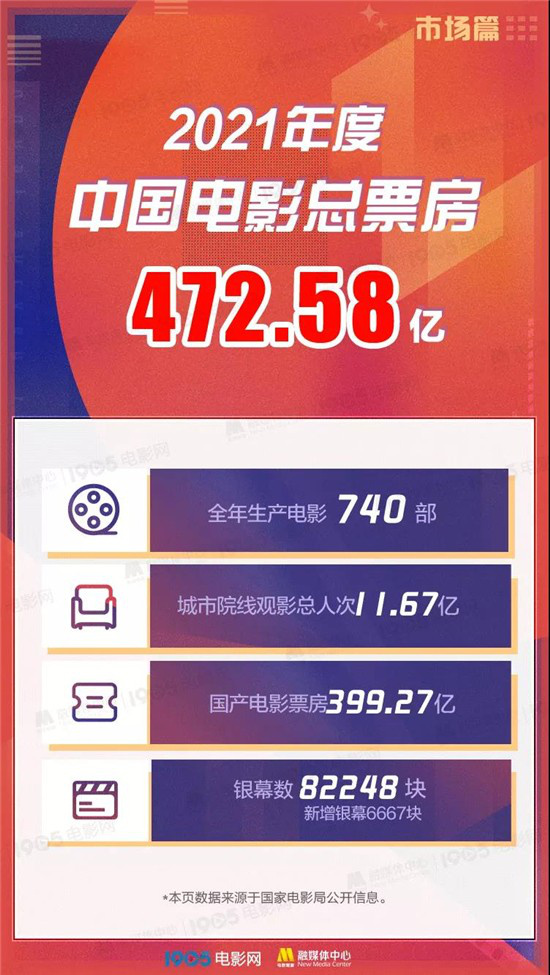
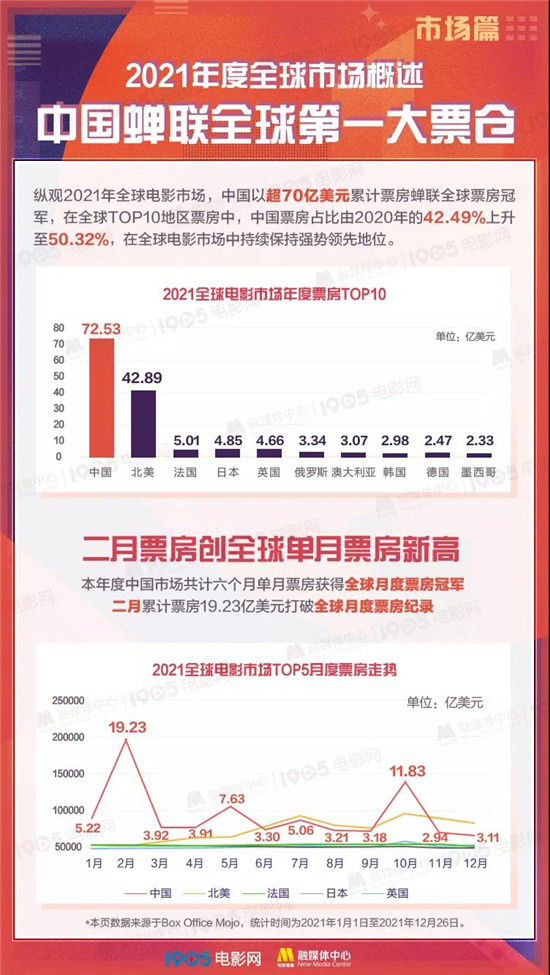
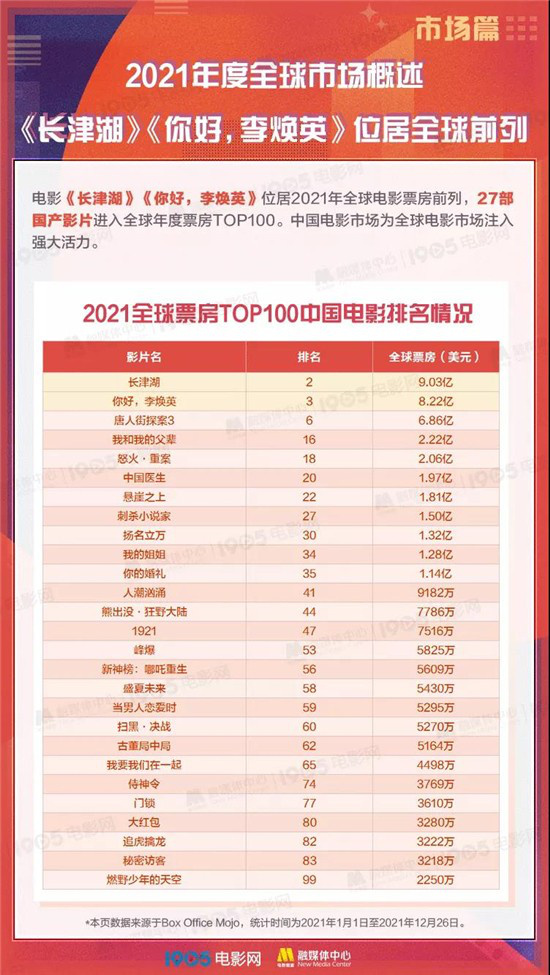
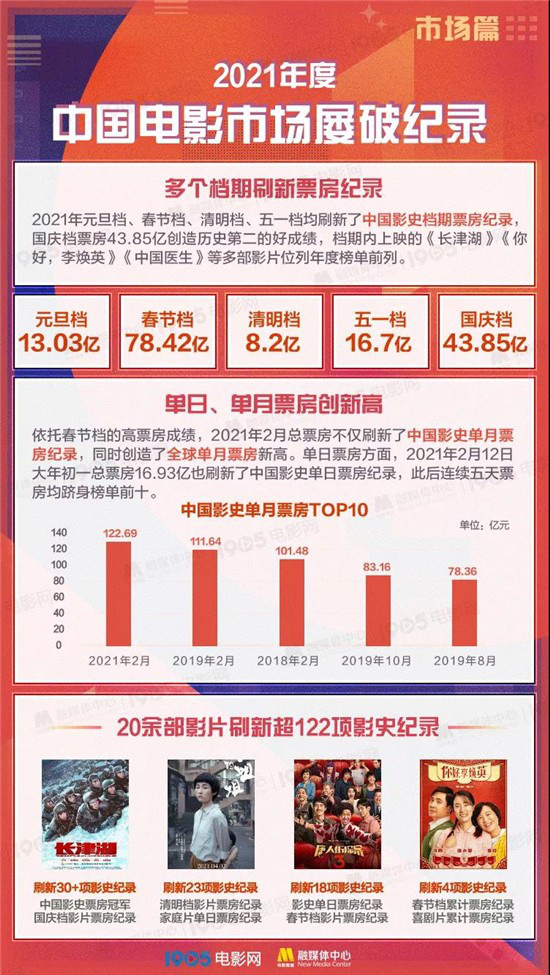
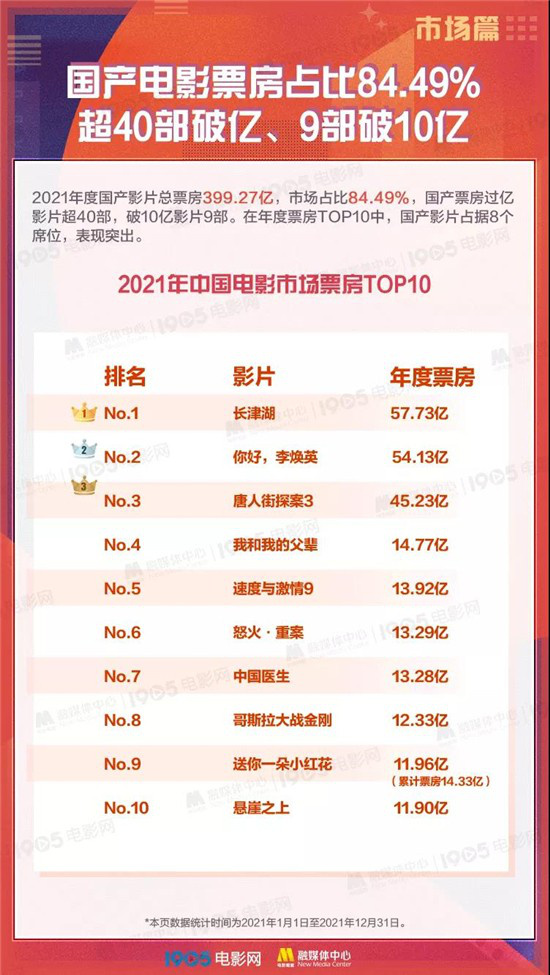



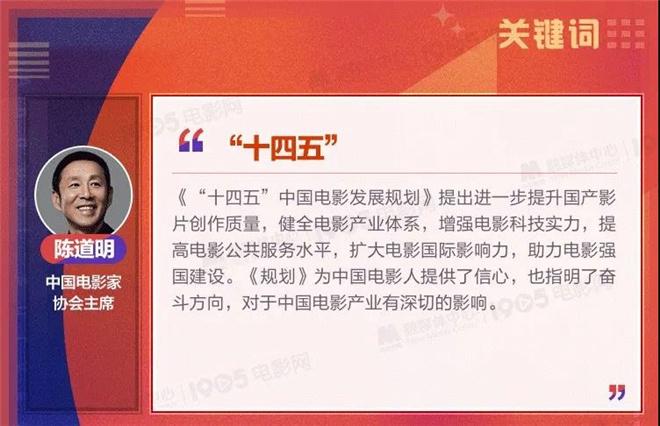
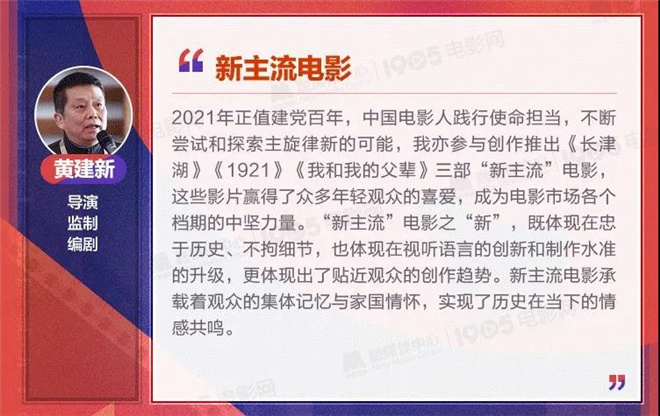
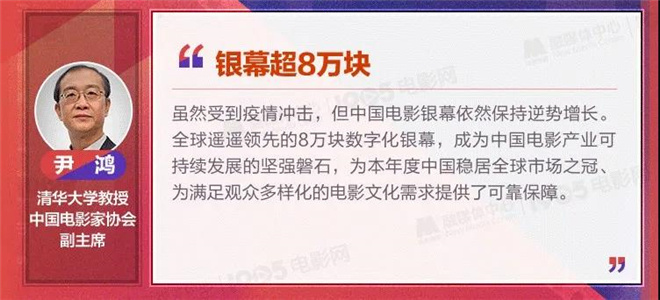
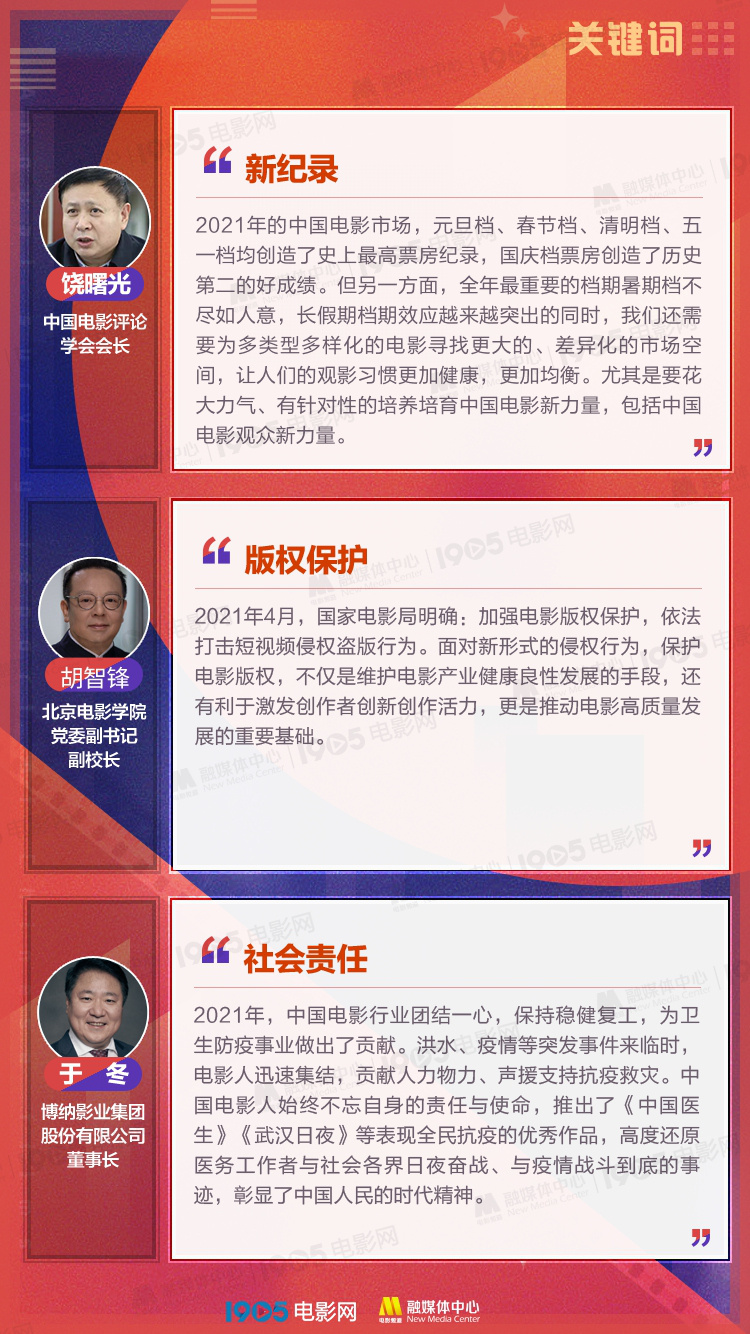
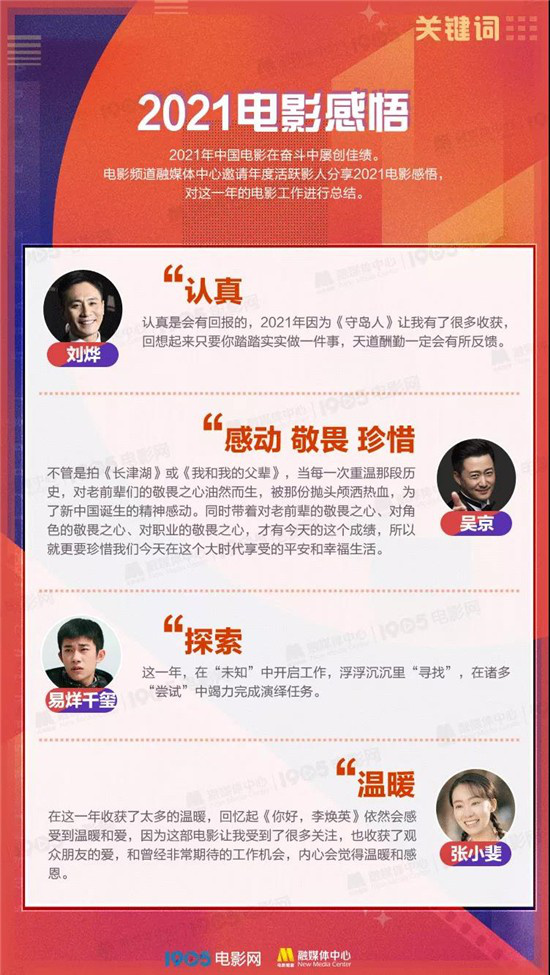
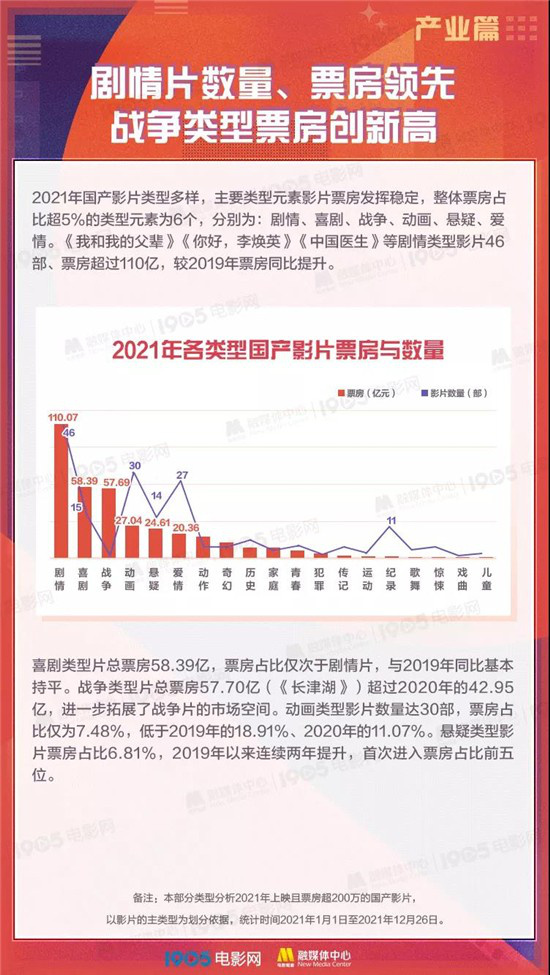

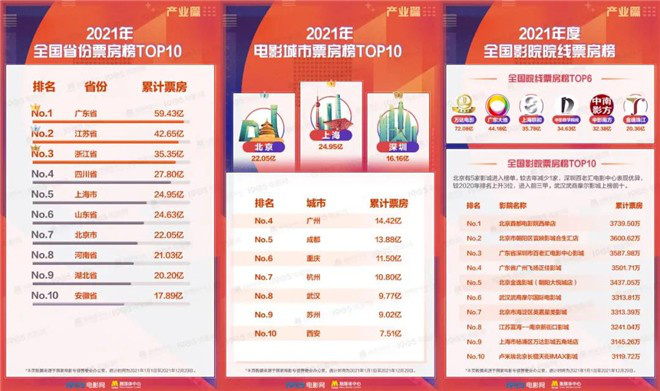




 The meeting pointed out that the prevention and control of animal diseases is directly related to the sustained and healthy development of animal husbandry, the stable and effective supply of livestock products and the life and health of the people.
The meeting pointed out that the prevention and control of animal diseases is directly related to the sustained and healthy development of animal husbandry, the stable and effective supply of livestock products and the life and health of the people.